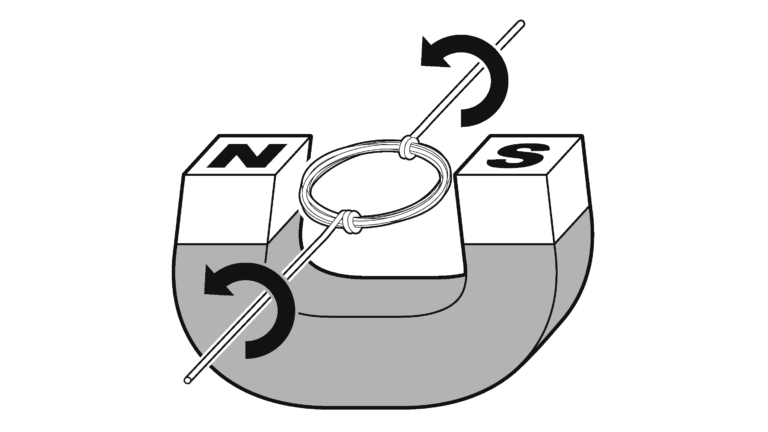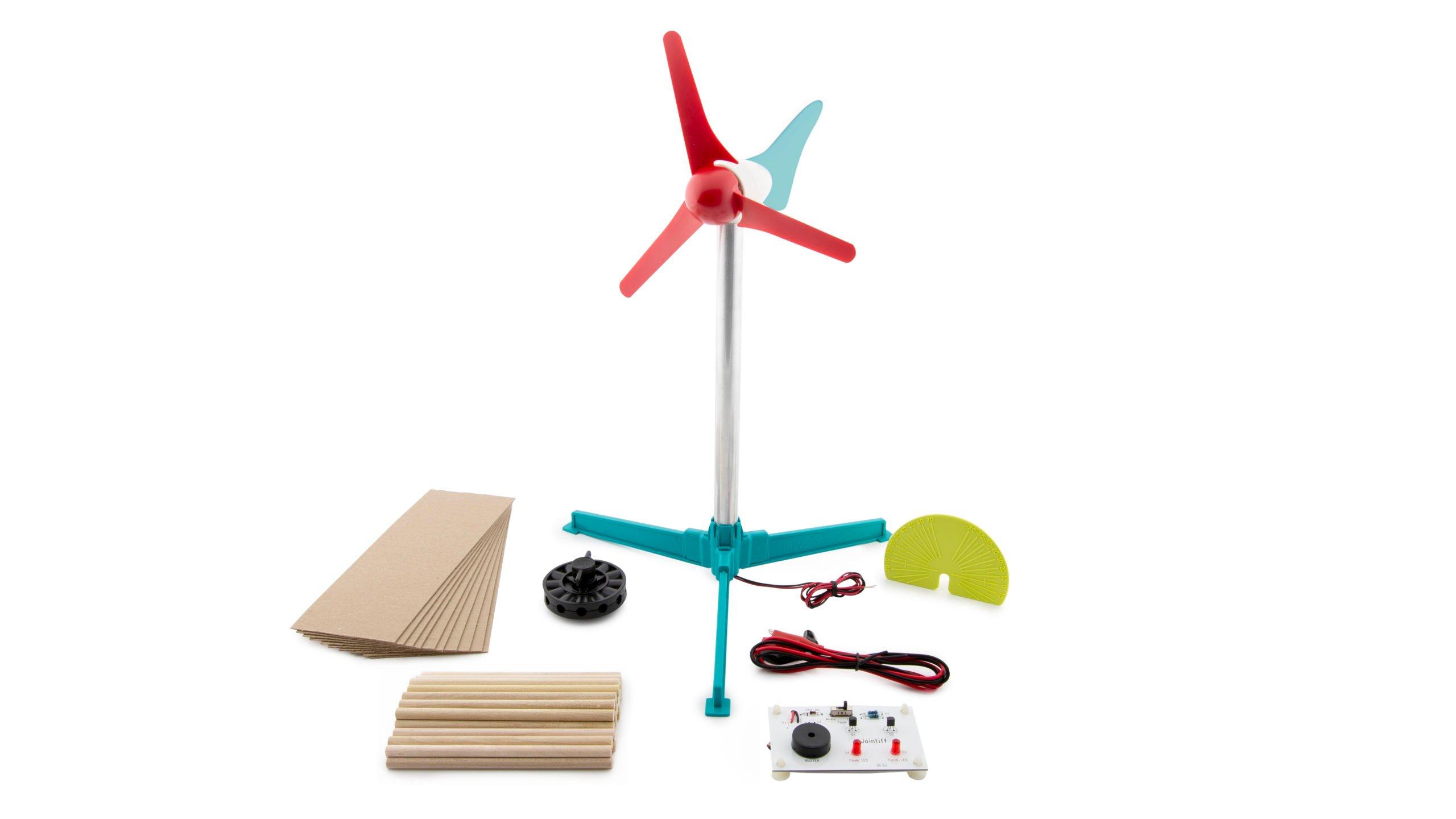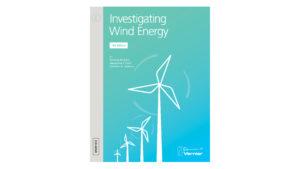
Introduction
Electricity can be challenging to study, because, like wind, you cannot see it. To understand electricity, you need to first learn about atoms.
Atoms are very, very small. Millions of atoms fit into the period at the end of this sentence. Atoms are the building blocks of everything in the universe–each plant, building, and person.
Atoms are made up of three types of even smaller particles. These particles are called neutrons, protons, and electrons. The center of an atom, the nucleus, is made of protons and neutrons. Electrons circle around the nucleus like planets circling the sun in our solar system.
The electrons that circle in a close path around the nucleus are held tightly, but the ones that circle farther out occasionally get knocked loose because they are not so tightly held. The movement of the electrons that get knocked loose is what we call electricity.
In a wind turbine, the generator transforms the energy of the wind into electrical energy using magnets. Inside the generator are two magnets. Between the magnets is a coil of wire that spins when the blades of the wind turbine spin. The magnet pushes and pulls the electrons in the coil of wire as it spins. These electrons flow through the wires connected to the generator, generating electricity.
Objectives
- Use energy generated from a wind turbine to play a tune and light up LEDs.
- Investigate the relationship between turbine speed and the ability to play a tune or light up an LED.
- Verify that energy is transferred by electric currents.
Sensors and Equipment
This experiment features the following sensors and equipment. Additional equipment may be required.
Ready to Experiment?
Ask an Expert
Get answers to your questions about how to teach this experiment with our support team.
- Call toll-free: 888-837-6437
- Chat with Us
- Email support@vernier.com
Purchase the Lab Book
This experiment is #2 of Investigating Wind Energy. The experiment in the book includes student instructions as well as instructor information for set up, helpful hints, and sample graphs and data.



